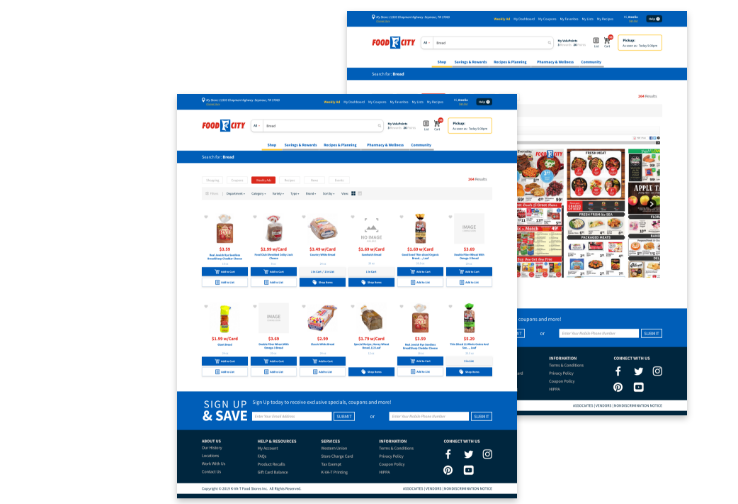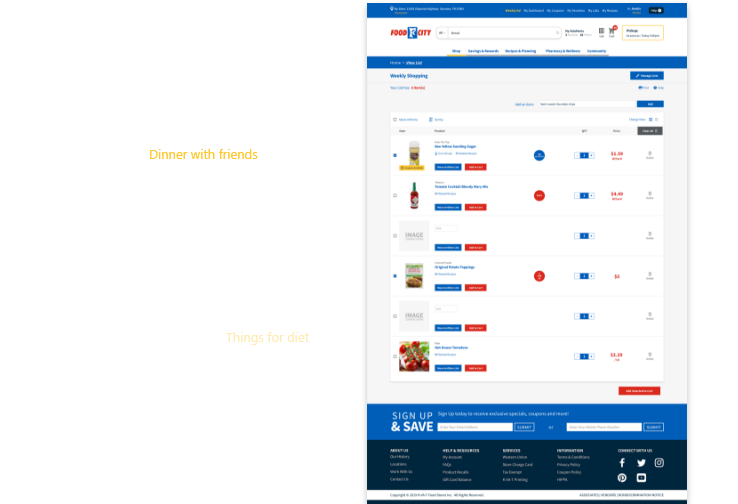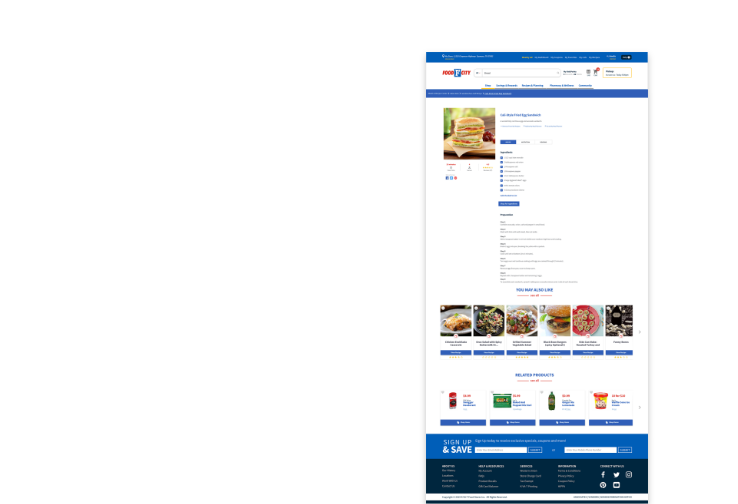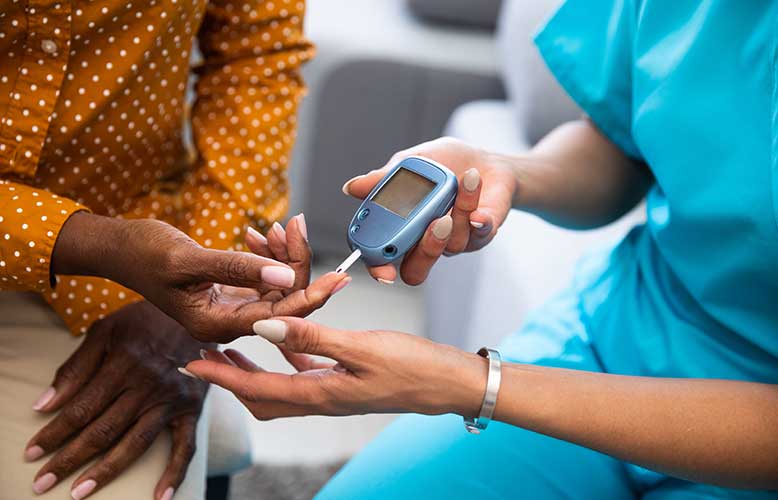
Wellness Club — Diabetes Awareness
Abingdon, VA. -
Sunday, Nov 1, 2020.
Written by: Anna L. Lyall, PharmD, Food City Clinical Health Coach
Every year during the month of November people from around the country bring awareness to the diabetes epidemic within our nation. From the origins of diabetic discovery to the incredible breakthroughs in pharmacologic treatment, we have more resources than ever before to help individuals live healthy and full lives. According to CDC estimates, approximately 34.2 million people have diabetes and 88 million people aged 18 years or older have prediabetes. Therefore, whether you have a diagnosis of diabetes or you are at risk of developing diabetes, it is important to act now so that you can live a life with endless possibility.
A Brief History of Diabetes Mellitus:
Scientists have been documenting the condition known as diabetes for thousands of years. The first known mention of diabetes symptoms was in 1552 B.C., when an Egyptian physician documented frequent urination as a symptom of a mysterious disease we now know as diabetes. Centuries later, people known as “water tasters” drank the urine of people thought to have diabetes to see if the excretion was sweet. To acknowledge this feature, in 1675 the word "mellitus," meaning honey, was added to the name "diabetes," meaning siphon.
It wasn’t until 1922 that a pharmacologic treatment became available. To honor the incredible breakthrough, Dr. Frederick Grant Banting and Professor John James Richard Macleod won the Nobel Prize in Medicine of 1923 for the discovery of insulin.
Despite the ongoing challenges of 2020, I believe we can all say that we are currently living in a beautiful era of scientific discovery! Current treatment regimens for chronic disease states are quite robust, and I am thankful to say medication selections are now tailored to patient preference, presentation, and stage of diagnosis.
What is Diabetes Mellitus:
Diabetes mellitus is primarily characterized into one of two categories: Type I Diabetes or Type II Diabetes. In people with type I diabetes, the beta cells within the pancreas make little or no insulin. In people with type II diabetes, the body either resists the effects of insulin or doesn’t produce enough insulin to maintain normal glucose levels.
Signs and Symptoms of Diabetes:
• Increased thirst
• Frequent urination
• Increase hunger
• Unintended weight loss
• Fatigue
• Blurred vision
• Irritability and other mood changes
• Frequent infections
• Areas of darkened skin, usually in the armpits and neck.
How the Body Gets Energy:
When we eat carbohydrates, our digestive system breaks them down into sugars (glucose). Some of the glucose is stored in the liver, but most of it enters the bloodstream and travels to cells to be used as fuel. Glucose needs the help of a hormone called insulin to enter most cells. Insulin is made in the pancreas and acts like a key, when bound with glucose it unlocks a doorway in the cell wall which creates an opening to allow glucose into the cell.
Management of Diabetes:
Before pharmacologic treatment became available, physicians began to realize the impact of dietary changes in the management of diabetes. Today, many organizations have published helpful guidance documents which provide wonderful insight on foods that may increase blood glucose, decrease cardiac complications, and give our bodies the most energy. Dietary considerations should always be individualized, our bodies are different; therefore, it is important to take small steps in making sure you are eating more of the foods that provide optimal health, regardless of a diagnosis of diabetes.
In addition to dietary consideration, the American Heart Association recommends 150 minutes of moderate intensity physical activity per week for most individuals with or without diabetes. This breaks down to 30 minutes per day, on 5 days of the week. Research has found that this amount of physical activity cuts your risk for heart disease and stroke, in addition to other health benefits.
Medications:
Individuals with chronic disease states like diabetes, may need to take a medication in addition to dietary and lifestyle changes. Medications can give our body the extra push it needs when internal processes are not working as they were intended. In people with type II diabetes, Metformin is most commonly prescribed as initial therapy. Metformin increases our body’s insulin sensitivity while also decreasing glucose production from the liver. In people with type I diabetes, short, long, or intermediate acting insulin may be used. A variety of factors play a role in determining the best treatment plan for you. Those factors may include carbohydrate intake, activity level, amount of insulin resistance within the body, cardiovascular risk, and age. Some medications even reduce the risk of major cardiovascular events (i.e. heart attack and stroke) in adults with type 2 diabetes mellitus and established cardiovascular disease. However, medications do not work unless taken as prescribed by your provider; therefore, it is important to have open communication with your provider in order to express changes or concerns. Your Food City Pharmacist is also available to answer any questions you may have.
Monitoring:
The first step in managing diabetes is learning how to monitor and check the level of glucose in your blood. This helps to make daily decisions about blood glucose control. The American Diabetes Association recommends working towards achieving a level of 80-130mg/dL before meals and < 180mg/dL one to two hours after the start of a meal. Keep in mind these goals are advised for the general public, you and your doctor may discuss specific goals that are best for you.
Reducing Complications:
Over time, high blood glucose damages your blood vessels, both large and small. This damage can lead to complications that affect the whole body. Complications include heart attack, stroke, kidney disease, vision problems, blindness, nervous system problems, and risk of lower-limb loss (amputation). But, by controlling your blood glucose, blood pressure, and cholesterol according to your treatment plan, you can help reduce your risk of complications.
This newsletter is intended for information purposes, please speak with your health care provider concerning diagnosis and treatment.
References: “The History of Diabetes.” Diabetes;, Content Source: Everyday Health, 2009, Accessed 15 October. 2020. https://www.everydayhealth.com/diabetes/understanding/diabetes-mellitus-through-time.aspx
“The Big Picture: Checking Your Blood Glucsoe.” ADA, Content Source: American Diabetes Association, 2020, Accessed 15 October. 2020 https://www.diabetes.org/diabetes/medication-management/blood-glucose-testing-and-control/checking-your-blood-glucose
“Fast Facts on Diabetes.” National Diabetes Statistics Report, 2020, Content Source: Centers for Disease Control and Prevention. 28 August 2020, Accessed 15 October. 2020 https://www.cdc.gov/diabetes/data/statistics-report/index.html
“Warm Weather Fitness Guide.” My Heart, My Life., Content Source: American Heart Association. 2012. Accessed 16 October. 2020
https://www.heart.org/idc/groups/heart-public/@wcm/@fc/documents/downloadable/ucm_448770.pdf#:~:text=The%20American%20Heart%20Association%20recommends%20at%20least%20150,least%2075%20minutes%20of%20vigorous%20exercise%20per%20week.

